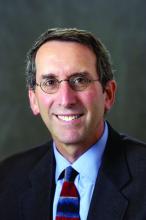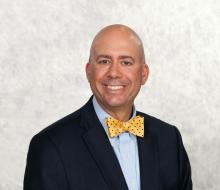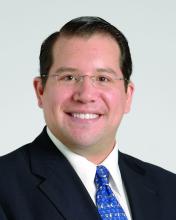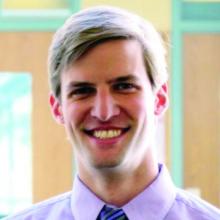Launched in April 2012 – the same year an article in the Journal of the American Medical Association estimated the U.S. health care system was wasting between $600 billion and $1 trillion annually because of issues such as overtreatment – Choosing Wisely continues to change both conversations and practices across the medical field.1
In creating Choosing Wisely, the ABIM Foundation sought to establish a framework for physicians to think about managing resources and to talk to patients about which medical tests and procedures might be unnecessary – or even harmful.
“What we’re trying to do is avoid harm,” said Daniel Wolfson, executive vice president and chief operating officer of ABIM. “That harm can be clinical, physical, psychological, and financial. That’s what we’re trying to reduce.”
Today, more than 75 medical specialties have their own “five things” lists: procedures that practitioners should question before ordering. Hospitalists have a total of 10 – 5 for adults and 5 for pediatrics – and hospitalists play a pivotal role in Choosing Wisely’s implementation, with crucial control over service lines. “Hospitalists are on the front line of patient care,” said Moises Auron, MD, FAAP, FACP, SFHM, a hospitalist at the Cleveland Clinic. “We are actually the frontline workers in the hospital.”
Choosing Wisely’s successes
In terms of its initial goal – starting a conversation and encouraging physicians to interrogate their habits – Choosing Wisely has been a success.
“It’s brought a lot of awareness about the problem of matching best evidence with the patient you have in front of you,” said John Bulger , DO, MACP, MBA, SFHM, chief medical officer of Geisinger Health Plan. “Some people call that evidence-based medicine, but the problem with calling it that is that you can have a study, but it may not match up with the patient you’re seeing right now. There are many things we do because we did them in the past or because we didn’t have all the information, and I think Choosing Wisely has made people think twice about some of the things they do.”
To help communicate these messages to patients, Choosing Wisely partnered early on with Consumer Reports, and hospitalists count that partnership as another success. By producing reports, brochures, and videos that translate medical language into layman’s terms and offer patients specific advice about talking with their provider – all under the trusted Consumer Reports name – the company provides tools for physicians to make these conversations transpire more efficiently.
The message of Choosing Wisely continues to spread, even internationally. It’s now present in 18 countries, Mr. Wolfson said. “We’re also seeing on the horizon many state efforts, such as in Connecticut and Rhode Island; and Delaware is organizing a statewide effort. I see that as the next big thing: statewide efforts that pair delivery systems with multistakeholder groups, regional health collaboratives, and physician organizations, all working to reduce use.”As it spreads, Choosing Wisely is sparking a new generation of related initiatives, such as Costs of Care and Johns Hopkins’ High Value Practice Academic Alliance. There’s a new section in the Journal of Hospital Medicine called “Things We Do for No Reason” highlighting different practices each month, and a nationwide Student High Value Care Initiative introduces value concepts to medical students. “It’s not Choosing Wisely by itself; it’s provided the backbone for all these new efforts,” Dr. Auron said.
Challenges remain
While it has spread, Choosing Wisely also has met some obstacles. Among them is that even with the help of Consumer Reports’ tools, the physician-patient conversations can be difficult. A behavioral economics concept called loss aversion is part of the reason: It’s basic human nature to feel the pain of loss more acutely than the pleasure of gain.
“It’s part of what makes that conversation with the patient so difficult from the provider’s side – that idea that taking away care from them can actually be better for them,” said Alexander Mainor, JD, MPH, research project coordinator at the Dartmouth Institute, which published “Physician Perceptions of Choosing Wisely and Drivers of Overuse.”2
“It’s tough because that conversation requires specific training,” he said. “It’s one thing to tell the clinician, or to have it pop up on an EHR, that provision of an antibiotic for this clinical presentation is not appropriate. However, it’s an entirely different thing to look a patient in the face who comes in expecting a course of antibiotics and tell them that they’re not going to get it.”
Another hurdle is the existing fee-for-service system, which obviously does not promote cost consciousness. Since there’s really no disincentive to a physician ordering an additional test, acceptance of Choosing Wisely can vary widely between institutions. “Choosing Wisely permeated very nicely here at the Cleveland Clinic,” Dr. Auron said. “But other hospitals – especially private hospitals that are not owned by doctors – what they want is just the service line.”
Physicians’ discomfort with uncertainty is another challenge, according to Mr. Mainor. “A lot of it can be by virtue of medical training and how particular residents were taught to always run this panel when you have this presentation,” he said. “Sometimes it’s hard to separate Choosing Wisely from the concept of defensive medicine, but this is more wanting to be able to tell the patient that you did everything that you could before proceeding to a particular next step or treatment.”
Getting patient input from the outset and making sure goals are aligned can help with some of these issues – but can itself be a hurdle.
“That’s the patient-centered part of this process that I think is very important and is always a challenge,” said Harry Cho, MD, FACP, director of quality, safety, and value for the division of hospital medicine at Mount Sinai in New York. “Doctors need to understand patients, too. Their thought may be, ‘I want more tests so that the doctor can make a better decision.’ Understanding where that knowledge gap is and what we need to do in terms of education and reaching out to patients and making the decision together, I think, will be very helpful.”



